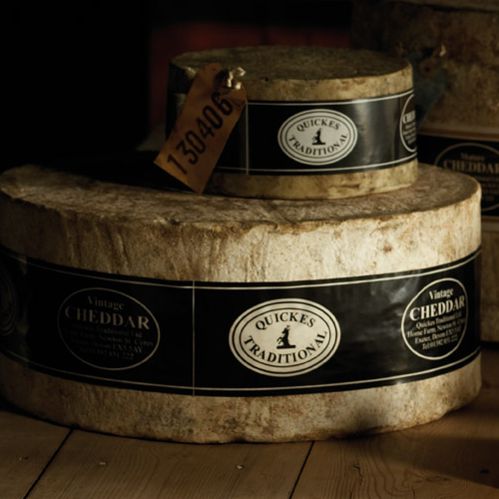We have customers every day looking for parmesan for their pasta. When we inquire as to the level of quality, they say "anything will do"
This is so frustrating, because it reveals the lack of knowledge or care in their kitchens. They may as well pick up a piece of anything hard cheese and grate it over the mediocre pasta they have cooked. Many restaurants have a similar outlook these days ! Thankfully not our customers.
Manufactured May 2011
Where does the name Parmesan come from?
Parmigiano-Reggiano is produced exclusively in the provinces of Parma, Reggio Emilia, Modena and parts of the provinces of Mantua and Bologna, on the plains, hills and mountains enclosed between the rivers Po and Reno. Cheese which was a poor copy was called Parmegan and Parmesan came out of that.
Grana Padano, granted DOP on 12 June 1996, is one of the few cheeses that can possibly compete with the King of Cheeses; Parmigiano-Reggiano. Created by the Cistercian monks of Chiaravalle in the 12th century, it is still made throughout the Po River Valley in northeastern Italy.
The cheese is made from unpasteurised, semi-skimmed cow’s milk from two milking and generally aged for two years. At the end of the cheese making process, Grana Padano develops a firm, thick and deeply straw-coloured rind protecting the fragrant, dry, flaking interior. Grana means “grainy” in Italian which is reflected in the fine granular texture with an intensely sweet flavour. As Grana Padano ages, the flavours become pronounced, savory and complex and the texture becomes more crumbly.
Though similar to Parmigiano Reggiano Grana Padano is inexpensive because areas producing the cheese are bigger. Moreover, Grana is less crumbly, milder and less complex than its long-aged sibling.
Our Grana Padano is aged three years, and Parmiggiano Reggiano aged 3 and 7 years. Why the specifics of age? As the cheese ages, it loses moisture, so the percentages of fat and salt increase. This enhances the flavor, and improves the texture.
Today there are similar products manufactured in Italy and EU Countries, using the same ingredients, but generally younger and cheaper. The Gran Moravia from the Czech republic is notable here. These will suffice in lieu of Reggiano or Grana, but are far off the mark regarding quality.
Grated Parmesan is another case in point. Once grated it needs to be used straight away, after about half an hour it has lost all moisture, and becomes a lot less flavourful. The product off supermarket shelves is an awful powdery substance, bearing no resemblance to the real thing !
Nutritional Features
Parmigiano-Reggiano (also known as Parmesan cheese) is a hard granular cheese with a long and natural maturation.
It’s a highly concentrated cheese and contains only 30% water and 70% nutrients.
This means that Parmigiano-Reggiano is very rich in protein, vitamin and minerals.Extraordinary, highly digestible, totally natural: Parmigiano-Reggiano is the King of Cheese.
Courgette, Parmigiano Reggiano and crème fraîche soup
- Serves 4 people
- 1 onion, chopped
- 2 cloves garlic, chopped
- 1 tbsp olive oil
- 1 kg courgettes, chopped
- 1.5 handfuls basil leaves
- 650ml vegetable stock
- 2 inch piece Parmigiano Reggiano rind
- Zest of 1 lemon
- 100g grated Parmigiano Reggiano
- 4 tbsp crème fraîche
- 25g shaved Parmigiano Reggiano
- Salt and pepper
- PREPARATION
Sweat the onion and garlic in oil in a large saucepan until softened.
Add the courgette and basil and cook until soft (10-15 minutes).
Add in the stock and Parmigiano Reggiano rind and cook for 15 minutes. Remove the rind and discard.
Pour into a food processor and blend until smooth.
Transfer to a saucepan and bring to simmering point. Remove from the heat and stir through grated Parmigiano Reggiano, ½ lemon zest, 1 handful torn basil leaves, 2 tbsp crème fraîche and season to taste.
Serve in individual soup bowls, topped with more crème fraîche, chopped basil, lemon zest and shaved Parmigiano Reggiano.
Parmigiano Reggiano and Butternut Squash Soup
This superb soup has a fabulous taste, enhanced by adding the rind from the Parmigiano Reggiano cheese as it cooks, to extract every bit of flavour
- Serves 4-6
- 150g (6oz) Parmigiano Reggiano, with rind
- 25g (1oz) butter
- 1 large onion, finely chopped
- 1 medium butternut squash, peeled, deseeded and chopped into chunks
- 900ml (1 ½ pt) hot vegetable stock
- 150ml (¼ pt) milk
- Salt and freshly ground black pepper, to season
- 4-6 slices French bread
- Fresh parsley or thyme, Chopped to garnish
- PREPARATION
- Reserve the rind from the Parmigiano Reggiano and cut it into chunks, then finely grate the cheese.
Melt the butter in a large saucepan, and gently fry the onion for about three minutes, until softened, but not browned. Add the butternut squash, vegetable stock and Parmigiano Reggiano rind. Heat until the mixture is just simmering, then turn the heat to low and cook gently for about 20 minutes, partially covered, until the vegetables are soft and tender.
Remove the rind from the saucepan, then transfer the soup to a blender or food processor and add most of the grated cheese, reserving about 25g (1oz) for garnishing. Blend the soup for 15-20 seconds, until completely smooth. Return it to the saucepan and add the milk. Stir thoroughly and reheat until piping hot. Taste and adjust the seasoning.
Meanwhile, toast the slices of French bread, sprinkle the remaining Parmigiano Reggiano on top and grill until melted. Ladle the soup into warmed bowls, then top each portion with one piece of French toast. Sprinkle with fresh parsley or thyme and a little extra ground black pepper, then serve.
Cook’s tips: You’ll need roughly 500g (1lb 2oz) of butternut squash when peeled and deseeded. If you have any left over, simply roast it until tender to serve as a vegetable with another meal. To store the soup, cool it quickly, then refrigerate for up to three days, or freeze for up to three months.










